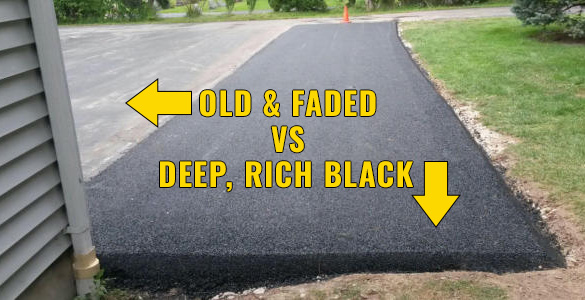Swift Solutions for Asphalt Spot Repair: Ideal Sealing Strategies
Swift Solutions for Asphalt Spot Repair: Ideal Sealing Strategies
Blog Article
Cold Mix Asphalt Vs. Hot Mix Asphalt: Which Is Right for You?

Composition Differences
Cold mix asphalt is produced by emulsifying the asphalt binder with water and an emulsifying agent before mixing it with aggregate. The warm mix asphalt production procedure entails warming the accumulation and asphalt binder individually before combining them at the asphalt plant.
Moreover, chilly mix asphalt has a tendency to be less dense and more flexible than warm mix asphalt. This adaptability makes it much better fit for areas with greater degrees of motion, such as driveways or roads with rush hour. On the other hand, warm mix asphalt is recognized for its high durability and resistance to rutting and cracking, making it a recommended option for freeways and high-traffic roadways where long life is important.
Setup Process Variances
The process of setting up cool mix and warm mix asphalt exhibits remarkable differences in their treatments and needs. In comparison, hot mix asphalt requires a more sophisticated installment procedure. Due to the heating requirements, warm mix asphalt installations are commonly brought out by specialists with specialized tools, making certain a more irreversible and structurally sound result.
Sturdiness and Long Life Factors
When thinking about asphalt options, durability and longevity are crucial factors to evaluate for long lasting pavement performance. Warm mix asphalt (HMA) is recognized for its exceptional resilience and long life.
In terms of long life, HMA commonly surpasses CMA because of its superior strength and resistance homes. HMA sidewalks have a longer life span, needing much less constant repairs and maintenance, which can equate to cost financial savings in the long run. In addition, HMA pavements are a lot more easily adjustable to fulfill particular project needs, even more boosting their toughness.
Cost Factors To Consider
Thinking about the economic ramifications is an essential facet when assessing the selection between warm mix asphalt (HMA) and cold mix asphalt (CMA) for pavement jobs. While the first cost of hot mix asphalt is commonly higher than that of cool mix asphalt, HMA frequently gives a more affordable option in the lengthy run due to its exceptional sturdiness and long life. HMA is recognized for its ability to hold up against rush hour loads and severe weather condition problems, reducing the demand for regular fixings and upkeep. On the various other hand, cold mix asphalt is much more budget friendly in advance but might call for even more constant patching and resurfacing, bring about higher upkeep prices gradually.
In enhancement to product costs, it's essential to think about the expenses linked with installment and upkeep when contrasting HMA and CMA. Eventually, the choice between HMA and CMA must take right into account not just the initial cost however likewise the long-term financial ramifications to figure out the most cost-efficient alternative for the details sidewalk job.
Environmental Influence Comparison
Comparison of the environmental impacts between warm mix asphalt (HMA) and chilly mix asphalt (CMA) reveals distinct differences in sustainability techniques. HMA production requires high temperature levels, leading to enhanced power consumption and greenhouse gas emissions.
Additionally, using CMA frequently includes recycling existing asphalt pavement, promoting resource conservation and decreasing the quantity of waste sent out to garbage dumps. This reusing facet further boosts the sustainability of CMA compared to HMA. On the whole, when considering the environmental effect, CMA becomes a more eco lasting option due to its reduced power demands, minimized emissions, and the possibility for recycling existing materials. By going with CMA over HMA, roadway building and construction projects can contribute favorably to ecological conservation efforts.
Verdict
In conclusion, the option in between cool mix asphalt (CMA) and warm mix asphalt (HMA) relies on various factors such as structure, installation procedure, toughness, longevity, cost, and environmental effect. angle parking. While CMA uses a fast and cost-efficient solution for small repair work, HMA ensures remarkable sturdiness and longevity for hefty web traffic areas. Consider these aspects carefully to establish which kind of asphalt is the best selection for your paving needs

Thinking about the monetary ramifications is an important element when evaluating the selection between warm mix asphalt (HMA) and cold mix asphalt (CMA) for pavement jobs. While the preliminary expense of hot mix asphalt is typically higher than that of cold mix asphalt, HMA usually provides a more economical remedy in the long run due to its exceptional durability and long life. angle parking.Contrast of the ecological influences between hot mix asphalt (HMA) and cold mix asphalt (CMA) discloses unique differences in sustainability methods.In final thought, the selection in between chilly mix asphalt (CMA) and hot mix asphalt (HMA) depends on various aspects such as structure, cold mix asphalt installment procedure, toughness, durability, price, and ecological influence
Report this page